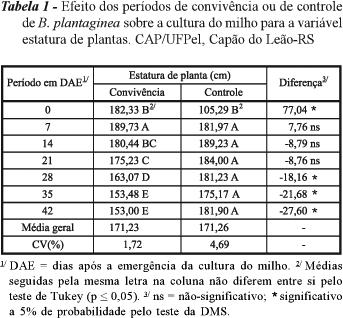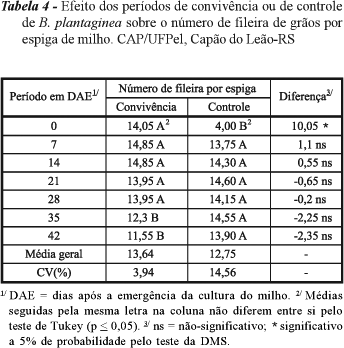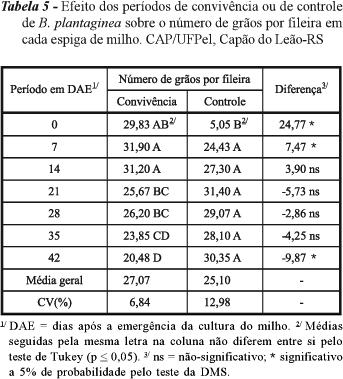Weed control period have great influence on plant growth and crop productivity. The objective of this work was to determine the competition periods, both previous to interference and critical interference prevention of B. plantaginea on corn crop in Southern Rio Grande do Sul. The trial was conducted in a completely randomized block design, under conventional tillage system, with four replications. The treatments consisted of maintaining the culture of corn in the presence and absence of B. plantaginea for 0, 7, 14, 21, 28, 35 and 42 days after crop emergence (DAE). B. plantaginea emerged from the soil seed bank, with an average population of 312 plants m-2. Ten corn plants were sampled and analyzed in each experimental assay to obtain the following variables: plant and ear insertion height (cm), ear length (cm), number of rows per ear, number of grains per row, number of grains per ear. Grain productivity was determined by collecting three central lines of the useful area in each experimental unit. Considering a 5% tolerance in production reduction, it was concluded that the total period of interference prevention was 27 DAE, the period preceding interference was 11 DAE and the critical period of interference prevention was 11 and 27 DAE.
competition; yield components; Zea mays










